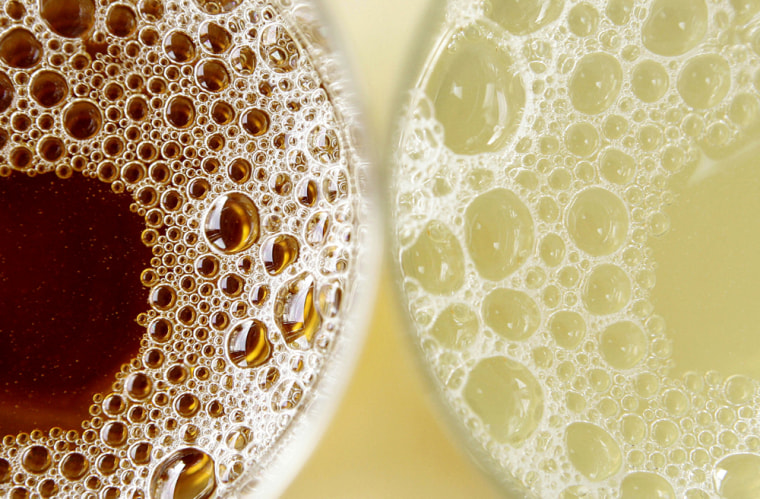For some consumers, the words apple juice and arsenic are now forever linked.
In the past two years consumer groups have raised safety concerns about the trace amounts of arsenic detected in a variety of brands. These trace amounts were already known to the Food and Drug Administration, but in response to public pressure, the agency proposed strict new limits on the level of arsenic allowed in apple juice Friday.
While the arsenic levels in apple juice are already very low, and pose no safety risk, the new lower acceptable limit is now the same as tap water, providing consistency with a widely consumed universal beverage.
Does this mean the apple juice children have been drinking for year is unsafe? Apple juice is perfectly safe to drink and always has been. The FDA had already set an arsenic limit of 23 parts per billion. More than that would be a “level of concern” and the agency could seize juices that exceed that amount. The new proposal sets the limit at 10 parts per billion, the same as in drinking water. (Drinking water safety is not regulated by the FDA, and monitored by the Environmental Protection Agency.) The FDA’s new proposal is based on an assessment by FDA scientists for lifetime risk of inorganic arsenic in apple juice.
Arsenic is found in trace amounts in soil and it is not terribly surprising that trace amounts are detected in foods. But how much is a “trace” when it comes to safety is an important question that the FDA has now addressed more precisely.
The agency will take public comments on the proposal for 60 days before finalizing it.
Arsenic in the food supply occurs in two forms: organic and inorganic. The inorganic form is a known carcinogen and has also been connected to cardiovascular disease, neurotoxicity, and other disorders. However, it’s unclear how much exposure can trigger disease.
Both Consumer Reports and the “Dr. Oz Show” raised questions about the safety of apple juice within the past two years. At the time there was confusion over which type of arsenic was detected – the more benign organic or the potentially harmful inorganic. Organic arsenics – which are also found in seafood -- are considered safe.
And because many fruit juices are imported from other countries, there have been additional concerns about pesticides. But an FDA spokesperson said Friday, “regardless of arsenic level, FDA does not allow the importation of apples or any other commodities offered for import to the U.S. that contain residues of unapproved pesticides.”
“U.S. importers are responsible for ensuring that foods that they import are safe for consumers and are in compliance with U.S. regulatory standards,” the FDA spokesperson said. “Food manufacturers likewise must ensure that the foods they produce are safe.”
The FDA has set the record straight, and did additional testing on 94 samples of arsenic in apple juice. They found that 95 percent of the samples tested were below 10 parts per billion of total arsenic (organic and inorganic). Importantly, 100 percent of the samples were below 10 parts per billion for inorganic arsenic, the carcinogenic form. That’s great news for consumers.
The juice industry responded to the FDA’s action, saying it “will carefully evaluate the federal agency’s proposed action level, the findings from the FDA’s most recent sampling and analysis of apple juice, and the related risk assessment of inorganic arsenic in apple juice,” according to a statement from the Juice Products Association.
Apple juice is one of the most popular beverages for young children, which means being cautious about safety is especially important. From a nutritional point of view, apple juice belongs in the “occasional treat” category. Ounce for ounce, apple juice has the same amount of sugar as soda and juice does not have the fiber of whole fruit. For children and adults, no juice needs to be included as part of a healthy-well balanced diet.
Still love your apple juice? Try a splash in a glass with some ice and add water or seltzer.
